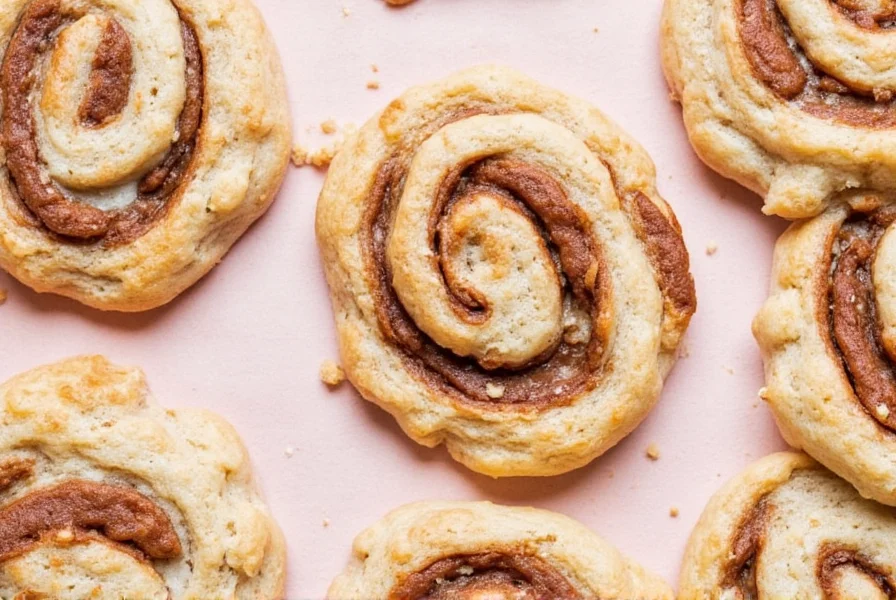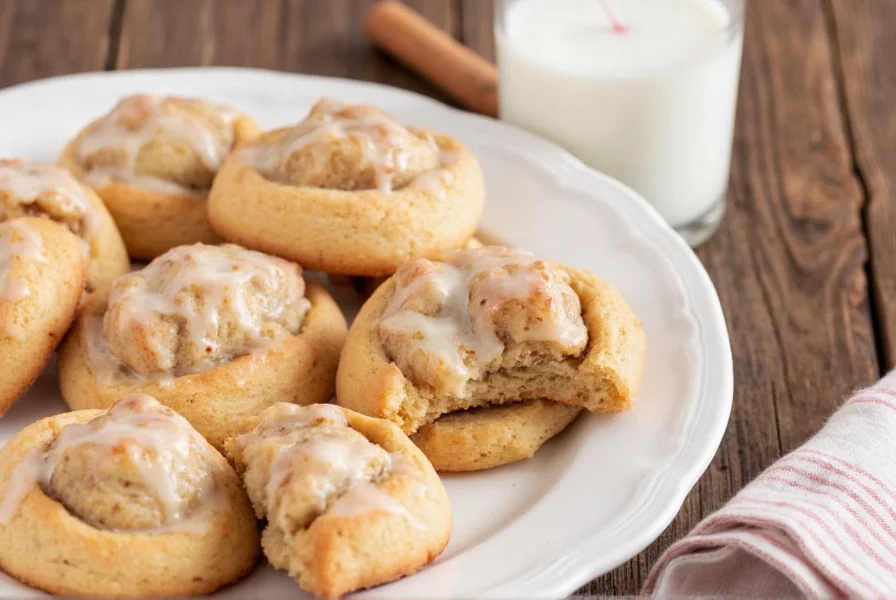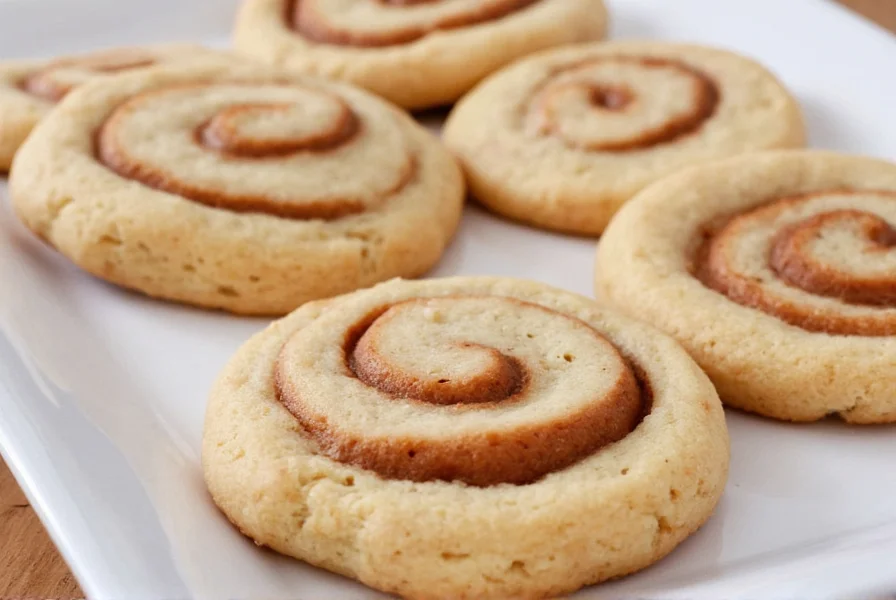These delightful treats bridge the gap between two beloved baked goods, offering the convenience of cookies with the aromatic richness of cinnamon buns. What sets them apart from standard cookies is their unique preparation method: rather than simply mixing ingredients, bakers create a dough, roll it with cinnamon filling, then slice and bake like cookies. The result is a perfectly portioned indulgence with that signature spiral pattern visible in each bite.
The Unique Appeal of Cinnamon Bun Cookies
While traditional cinnamon rolls require careful handling of yeast dough and multiple rising stages, cinnamon bun cookies offer a simplified approach that maintains the essence of the original. Their compact size makes them ideal for portion control, lunchboxes, or coffee pairings. The cookie format also provides structural advantages—no risk of the filling leaking out during baking as sometimes happens with traditional rolls.
Food scientists note that the cookie version achieves its distinctive texture through precise butter-to-flour ratios. Unlike cakey cinnamon rolls, these cookies maintain a slight chew while still delivering that melt-in-your-mouth quality when made with proper technique. The magic happens when the cinnamon-sugar filling caramelizes during baking, creating pockets of intense flavor throughout each cookie.
| Characteristic | Cinnamon Bun Cookies | Traditional Cinnamon Rolls |
|---|---|---|
| Preparation Time | 45-60 minutes | 2-3 hours |
| Texture | Chewy with soft interior | Puffy, cake-like |
| Portability | High (individual portions) | Low (requires plate) |
| Filling Distribution | Even swirl throughout | Concentrated center |
Perfecting Your Cinnamon Bun Cookies Recipe
Creating exceptional cinnamon bun cookies requires attention to ingredient quality and technique. The foundation is a rich, buttery cookie dough that's firm enough to hold its shape but soft enough to deliver that signature chew. European-style butter with higher fat content produces superior results compared to standard supermarket varieties.
When selecting cinnamon, opt for Ceylon variety for its complex, citrusy notes rather than the more common Cassia. The difference becomes apparent in the finished product—Ceylon cinnamon offers nuanced warmth without overwhelming heat. For the filling, a 3:1 ratio of brown sugar to cinnamon creates the ideal balance of sweetness and spice.

Step-by-Step Baking Guide
Begin by preparing your dough using the creaming method—this incorporates air for optimal texture. After chilling the dough (a crucial step many skip), roll it into a rectangle approximately 12x8 inches. Spread softened butter evenly across the surface, then sprinkle your cinnamon-sugar mixture. Starting from the long edge, roll the dough tightly into a log.
Here's where technique matters most: when slicing your log, use a sharp serrated knife and apply gentle, even pressure. Sawing motions can distort the swirl pattern. For clean cuts, chill the log for 15 minutes before slicing. Place cookies on parchment-lined baking sheets with adequate space between them—they'll spread slightly during baking.
Bake at 350°F (175°C) for 12-14 minutes until the edges turn golden. The centers should appear slightly underdone—that's intentional, as they'll continue cooking from residual heat. This approach yields cookies that are crisp at the edges with a delightfully soft center, perfectly capturing that cinnamon roll essence in cookie form.
Troubleshooting Common Issues
Many home bakers encounter issues with filling leakage during baking. This typically happens when the dough isn't sufficiently chilled before slicing or when too much filling is used. Aim for a 1/4-inch thick filling layer—any thicker increases leakage risk. Another frequent problem is cookies spreading too much, which usually indicates butter that was too soft during preparation.
For those seeking the ideal texture balance between cookie and cinnamon roll, consider these adjustments: adding one extra egg yolk enriches the dough, while replacing 2 tablespoons of flour with cornstarch creates a more tender crumb. If your cookies emerge too cakey, reduce the baking powder by half; if too dense, increase it slightly.

Variations to Explore
Once you've mastered the basic recipe, experiment with creative adaptations. Adding toasted pecans or walnuts to the filling creates a delightful crunch contrast. For a gourmet touch, incorporate orange zest into the dough—its citrus notes complement cinnamon beautifully. Vegan bakers can achieve excellent results using plant-based butter and flax eggs, though chilling times may need slight adjustment.
Seasonal variations offer endless possibilities: pumpkin spice blend for fall, cardamom for Scandinavian flair, or even a chocolate-cinnamon fusion. The cookie format proves remarkably adaptable while maintaining its essential character. For special occasions, consider adding a simple glaze made with powdered sugar and cream cheese—just be sure to apply it after the cookies have cooled completely.
Storage and Serving Recommendations
These cookies maintain freshness surprisingly well when stored properly. Keep them in an airtight container at room temperature for up to three days. For longer storage, freeze the unbaked dough logs—slice directly from frozen, adding 1-2 minutes to baking time. This method preserves texture better than freezing baked cookies.
When serving, consider pairing with strong coffee or chai tea to cut through the sweetness. For breakfast service, a dusting of powdered sugar enhances presentation. The compact size makes them ideal for cookie platters, lunchboxes, or as edible gifts—simply arrange in decorative boxes with parchment paper between layers.
Frequently Asked Questions
Can I make cinnamon bun cookies without yeast?
Yes, traditional cinnamon bun cookies use baking powder rather than yeast, making them quicker to prepare than yeast-based cinnamon rolls. The baking powder provides sufficient lift for the characteristic soft texture without requiring rising time.
Why are my cinnamon bun cookies spreading too much?
Excessive spreading usually occurs when the butter in the dough is too warm or when insufficient flour is used. Chill the dough thoroughly before slicing, and consider adding 1-2 tablespoons more flour to your recipe if spreading persists. Using European-style butter with higher fat content can also help maintain structure.
How do I prevent the filling from leaking out during baking?
To minimize filling leakage, ensure your dough is well-chilled before slicing, use no more than 1/4 inch of filling, and seal the edge of the rolled dough log with a light brush of water or egg wash. Baking the cookies on a parchment-lined sheet rather than greased pans also helps contain the filling.
Can I prepare cinnamon bun cookie dough ahead of time?
Absolutely. The rolled dough logs freeze exceptionally well for up to three months. When ready to bake, slice directly from frozen, adding 1-2 minutes to the baking time. This make-ahead approach yields cookies with texture nearly identical to freshly prepared dough.
What's the best way to achieve distinct swirl patterns in cinnamon bun cookies?
For pronounced swirls, roll your dough log tightly and chill thoroughly before slicing. Use a sharp serrated knife with gentle sawing motion, and avoid pressing down too hard when cutting. The contrast between light dough and dark filling becomes most visible when using quality Ceylon cinnamon rather than darker Cassia varieties.











 浙公网安备
33010002000092号
浙公网安备
33010002000092号 浙B2-20120091-4
浙B2-20120091-4